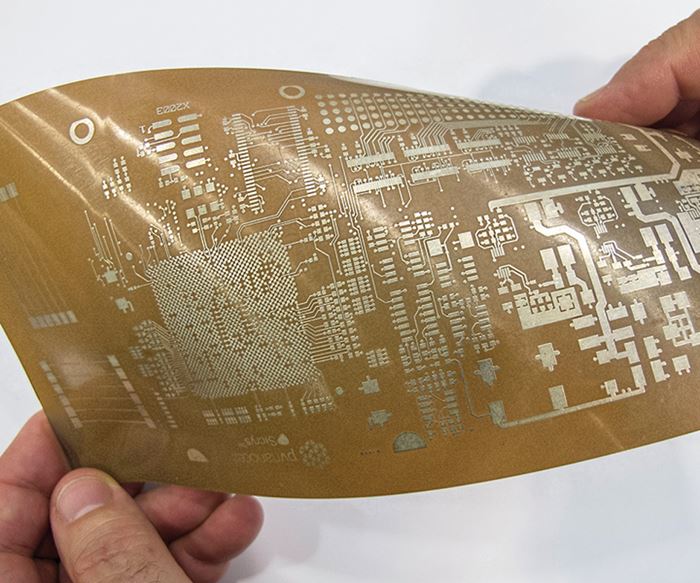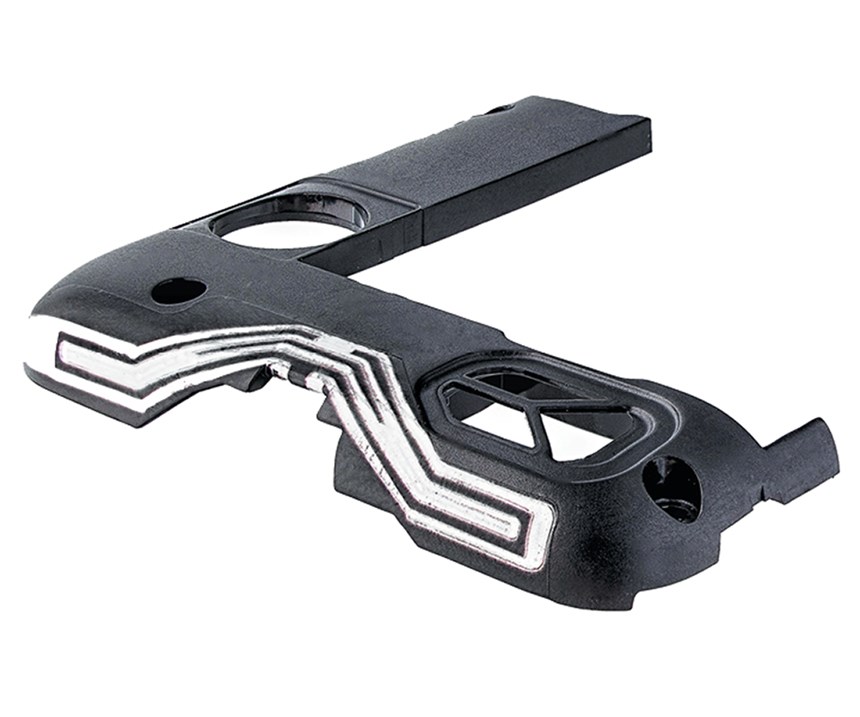Dramatic New Potential for Circuitry Printed on Plastics
Novel nano-silver and nano-copper inks reduce costs and complexity, while opening up new applications.
Printed circuit boards reduced to a thin, flexible film; and electronic parts like cell-phone antennas made with one-step, chemical-free application of circuitry—both are being developed with novel conductive inks that make printing of electrical circuitry on rigid and flexible plastics much easier and less expensive than ever before. Developed by PV Nano Cell in Israel, the Sicrys inks are based on patented single-crystal nanoparticles of silver or copper. Silver inks were developed in 2010 and copper versions in 2012 (enhanced copper inks were launched last year). Both can be applied by digital printing techniques, either inkjet or aerosol jet. This simple, one-step application using existing equipment reportedly offers dramatically lower costs and lead times than more complex techniques.
For example, circuitry can be printed directly onto flexible film (photo) without the multiple steps, chemical etching, and hazardous waste production of photolithography used to make PC boards. PV Nano Cell (PVN) is working with beta-site customers in China, Europe, and Israel, which are currently printing monolayer circuitry on 19 x 21 in. sheets at a rate of 20 sheets/hr.
Rigid molded parts like cell-phone antennas (photo) are typically produced today by laser direct structuring (LDS), which involves multicomponent injection molding with two grades of polycarbonate, one of which contains special additives that react to laser light to permit chemical deposition of metal circuitry. PVN reportedly can lower cost by 30% with direct application of conductive inks onto the surface of the part. A line capable of printing 4.5 million antennas/yr has been installed in China, according to PVN CEO Dr. Fernando de la Vega. What’s more, he says his inks allow printing the antenna onto the inside of the phone case, no longer requiring a separate injection
molded part.
According to de la Vega, competing conductive inks suffer from clumping of the nanoparticles when jetted at the high frequencies needed for mass production, which reduces throughput and raises cost. His single-crystal nanoparticles resist clumping and can be produced inexpensively. His silver ink sells for below $1500/kg in high volumes, a fraction of the price of other nano-silver inks and competitive with standard silver inks for screen printing. His brand-new copper nanoparticle inks are priced two-thirds less than the silver versions and are said to be the first copper inks with long-term resistance to oxidation (1 yr or more).
PVN is working with a number of printing equipment makers (including 3D printing), such as Stratasys, Eden Prairie, Minn., and Optomec, Albuquerque, N.M. In some printed electronics applications, customers that commit to purchase a certain annual volume of ink will get the printer for free.
Related Content
-
Design Optimization Software Finds Weight-Saving Solutions Outside the Traditional Realm
Resin supplier Celanese turned to startup Rafinex and its Möbius software to optimize the design for an engine bracket, ultimately reducing weight by 25% while maintaining mechanical performance and function.
-
Molder Repairs Platen Holes with Threaded Inserts
Automotive molder ITW Deltar Fasteners found new life for the battered bolt holes on its machine platens with a solution that’s designed to last.
-
Atop the Plastics Pyramid
Allegheny Performance Plastics specializes in molding parts from high-temperature resins for demanding applications as part of its mission to take on jobs ‘no one else does.’
















